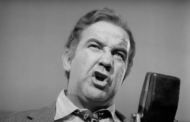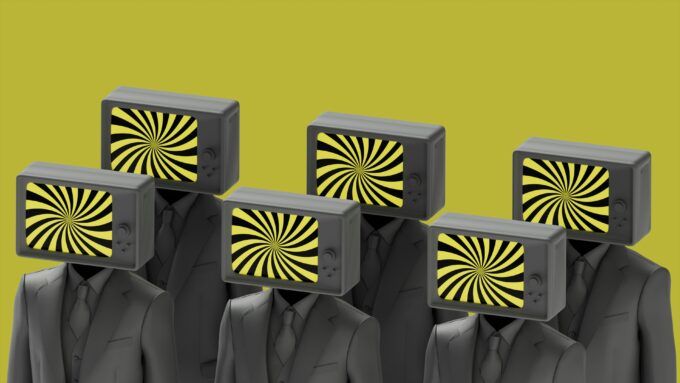
Fake News
Published on http://www.counterpunch.org/
“Disneyland is presented as imaginary in order to make us believe that the rest is real, whereas all of Los Angeles and the America that surrounds it are no longer real, but belong to the hyperreal order and to the order of simulation.”
— Jean Baudrillard, Simulacra and Simulation, 1981
We all know that there is no authority in the freewheeling cyberspace in which we all communicate. No one speaks ex cathedra, or, more precisely, if they do, no one credits what they say as anything more than their opinion. Nevertheless, there was a beginning or slow emergence of our millennial disrespect for truth checkmating our own self-authorizing views. In A Postmodern Reader, which I edited with Linda Hutcheon in 1993, and my own A Primer to Postmodernity, 1997, both emerging from courses on postmodern culture at the beginning of the `90s, I had a ready to hand answer for the always asked question: “How then can you tell the difference between a fake story and a real one if, as you say, all we have are stories of the truth?”
My answer had two parts. In one view, begun in the Enlightenment, stories which comply to determining conditions of reality have staying power and those that don’t fade away, or are disproved by empirical or rational methods. We can more easily, Karl Popper tells us, reveal the false than the true. In another view, hierarchies of values and meanings commonly shared at a particular time privilege certain truth stories as truth and others as false. A continuous contesting of truth stories or narratives goes on with varying levels of heat out of which a story emerges as more real and true than the others. That confirmation goes on until it suddenly or slowly loses such confirmation. That black African slaves had no souls was a true story until it became a fake story. And so on.
Some fifteen years later, I see that the skeptical disposition toward truth and authority as well as words and their presumed trustworthy connection to the world need only have a noisy mayfly existence and yet do lasting damage to the fragile frame upon which the “general Welfare” rests. But beyond this is a crucial miscalculation as to how our subjectivities always enwrapped in a world we yet see as outside ourselves could find encouragement and confirmation of that separation, of a thoroughly detached and dominating subjectivity, in an alter-world — a cyberspace, online world.
That challenging alternative universe in which our subjectivities could roam had not “back in the day” established itself as a “society,” one endlessly divided and home to an equal number of voices establishing a new media broadcasting those voices. Subjectivities had not only found a “world” they could shape, a bespoke reality, but a place where they could voice, often in 140 characters, what was unchallenged within their personally designed realities.
I had no way of knowing nor could I imagine an entire culture would so quickly cast aside the tradition of truth, reality, objectivity, and rationality, disarming itself from any determination of fake and true commonly shared. It seemed that in one fantastical leap in the American mass psyche everyone now skeptically and angrily rejected the methods and institutions authorizing and authorized by reason and reality. This mass psyche is now losing itself in endless battles of words unmoored from any commonly shared apprehension of “conditions of the real.” What could be mutually perceived has given way to uncontested affirmations of “the world as it appears to me.” It is a triumph of the phenomenal witnessed repeatedly in individuals but rarely in an entire culture.
The chap who fired an automatic weapon in a pizzeria in an effort to rescue young girls caught in Hillary Clinton’s sex slave operation had come to the Truth of all that on a website. He is, you might say, a recent spawn of President-elect Trump’s own breezy replacement of fact and evidence as to what is true with both lies and bullshit. Lies, according to philosopher, Harry Frankfurt, indicate knowledge of the truth and a decision to stand it on its head. Bullshit is free of both truth and falsehood, the bullshitter unconcerned and ignorant of both but spinning a story nonetheless. There’s a mighty arrogance here and in Trump’s case it has proven to be magnetic and charismatic. Trump seems to be more of a bullshitter than a liar, his narcissism indifferent to what remains outside, true or false, of his own mind.
“Fake news is subjective” another chap interviewed in The New York Times tells us. “There’s no way for me to know what is objectively true, so we’ll stick to our guns and our own evidence. We’ll ignore the facts because nobody knows what’s really true anyway.” (Sabrina Tavernise, “As Fake News Spreads Lies, More Readers Shrug at Truth,” (Dec. 7, 2016). This all amounts to a very sad situation. The scientific method is still around; empirical and rational methodologies are still around. And yet we are now have suddenly stuck our head through a curtain, like John Bunyan’s pilgrim, and see nothing sacred or reliable beyond our own subjective responses, as if an objective world we could all rationally determine had vanished and what we now see are conspiracies of truth manipulation supported by equally spurious facts and evidence. Much of this fragmentation of truth and the methods and words that reveal it have been bred and nurtured in cyberspace where everything indiscriminately finds a place. A great democratization not unlike the chaos of an abyss.
Kant spoke of noumenal and phenomenal realities, reality impervious to our subjective experiencing of it and reality as we subjectively perceive it. It seems clear that at this millennial moment, we have lost any awareness of or concern for what lies outside our phenomenal realities. This state of affairs is having a troubling effect on established journalism, from the Wall Street Journal in one camp and The New York Times in the other. Political affiliation doesn’t matter when both are viewed as offering conspiratorial reportage. And yet politics is precisely the point at which we must observe to what our phenomenal realities have brought us. It remains a hyperreal through which we nonetheless must find our way to a mutually shared perception of a reality that “promotes the general Welfare.”
What is fake is not a subjective determination but rather a subjectivity detached from and undetermined by a “worlding” in which we are all invested is a fake story.













